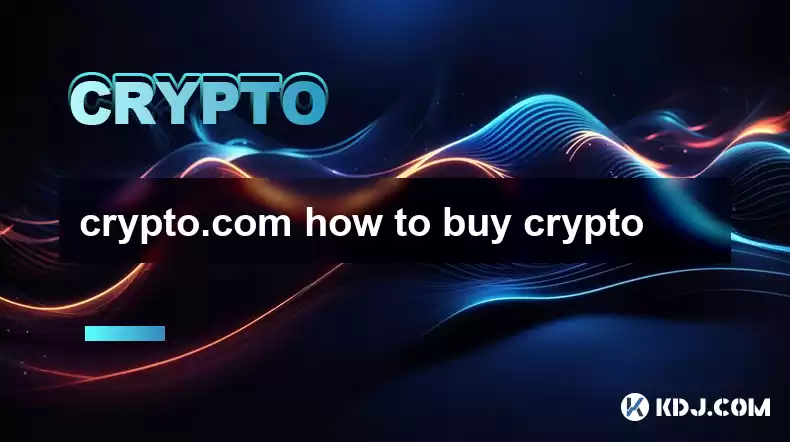-
 Bitcoin
Bitcoin $117800
0.49% -
 Ethereum
Ethereum $4432
0.55% -
 XRP
XRP $3.106
1.07% -
 Tether USDt
Tether USDt $1.001
0.01% -
 BNB
BNB $835.8
1.74% -
 Solana
Solana $189.1
2.72% -
 USDC
USDC $0.9999
-0.01% -
 Dogecoin
Dogecoin $0.2302
3.65% -
 TRON
TRON $0.3485
-0.69% -
 Cardano
Cardano $0.9212
-0.91% -
 Hyperliquid
Hyperliquid $46.97
1.45% -
 Chainlink
Chainlink $22.77
5.61% -
 Stellar
Stellar $0.4284
0.82% -
 Sui
Sui $3.766
2.82% -
 Bitcoin Cash
Bitcoin Cash $583.5
-0.82% -
 Ethena USDe
Ethena USDe $1.001
0.03% -
 Hedera
Hedera $0.2512
2.78% -
 Avalanche
Avalanche $24.18
2.27% -
 Litecoin
Litecoin $120.2
2.10% -
 Toncoin
Toncoin $3.450
1.96% -
 UNUS SED LEO
UNUS SED LEO $9.412
-0.92% -
 Shiba Inu
Shiba Inu $0.00001298
2.35% -
 Uniswap
Uniswap $10.99
3.75% -
 Polkadot
Polkadot $3.962
3.09% -
 Dai
Dai $1.000
0.00% -
 Bitget Token
Bitget Token $4.643
1.38% -
 Cronos
Cronos $0.1511
-0.08% -
 Ethena
Ethena $0.7246
3.18% -
 Monero
Monero $254.9
7.90% -
 Pepe
Pepe $0.00001100
3.32%
crypto.com how to buy crypto
To begin your cryptocurrency journey, register and verify your account on Crypto.com, the user-friendly exchange offering a wide range of coins and competitive rates.
Feb 03, 2025 at 04:42 am

The Ultimate Guide to Crypto.com: A Beginner's Journey into Buying Cryptocurrency
Key Points:
- Understanding Cryptocurrency Exchanges and Choosing Crypto.com
- Step-by-Step Instructions for Registering and Verifying Your Account
- Depositing Funds and Selecting Your Preferred Cryptocurrency
- Placing a Cryptocurrency Order and Mastering Trade Types
- Enhancing Account Security and Exploring Advanced Features
Step 1: Comprehending Cryptocurrency Exchanges and Opting for Crypto.com
Cryptocurrency exchanges, like Crypto.com, serve as platforms facilitating the buying and selling of digital assets. These platforms offer varying features, fees, and supported cryptocurrencies. Crypto.com stands out with its user-friendly interface, diverse coin selection, and competitive rates.
Step 2: Registering and Verifying Your Crypto.com Account
Creating an account on Crypto.com is straightforward. Follow these steps:
- Visit the Crypto.com website or download the mobile app.
- Click "Sign Up" and provide personal details like email, phone number, and address.
- Undergo identity verification by submitting a government-issued ID and selfie.
Step 3: Funding Your Crypto.com Account
Deposit funds into your Crypto.com account to purchase cryptocurrencies. Multiple options are available:
- Bank Transfer (SEPA, ACH): Initiate a bank transfer to your Crypto.com account, ensuring the provided account details match those of the receiving bank.
- Credit/Debit Card: Use your card to instantly fund your account, although transaction fees may apply.
- Cryptocurrency Transfer: If you already possess cryptocurrency, transfer it from external wallets to Crypto.com.
Step 4: Choosing and Acquiring Your Cryptocurrency
Crypto.com offers a wide range of cryptocurrencies, including Bitcoin, Ethereum, and altcoins. To find and buy a specific cryptocurrency:
- Navigate to the "Markets" section.
- Search for and select the desired cryptocurrency (e.g., Bitcoin).
- Review the available trade pairs (e.g., BTC/USDT).
Step 5: Placing a Cryptocurrency Order and Comprehending Trade Types
There are several order types available when trading cryptocurrencies:
- Market Order: Execute an order immediately at the current market price.
- Limit Order: Set a specific price at which to buy or sell, executing only if the market price reaches that level.
- Stop Order: Trigger an order to buy or sell if the asset reaches a predefined price, known as the stop price.
Step 6: Fortifying Account Security
Enhance the security of your Crypto.com account by implementing these measures:
- Enable two-factor authentication (2FA) for an additional layer of protection.
- Use strong passwords and store them securely.
- Avoid sharing account information with untrustworthy sources.
Step 7: Delving into Advanced Features
Crypto.com provides advanced features for seasoned traders and crypto enthusiasts:
- Crypto Earn: Stake cryptocurrencies and earn passive income through interest.
- Crypto.com Visa Card: Spend cryptocurrency with ease using a Crypto.com prepaid card, earning rewards and cashback.
- Crypto.com NFTs: Explore the world of non-fungible tokens (NFTs) and buy unique digital collectibles.
FAQs:
What makes Crypto.com stand out as a cryptocurrency exchange?
Crypto.com excels with its user-friendly platform, vast coin selection, and competitive rates, providing a seamless cryptocurrency trading experience.
What are the different ways to fund my Crypto.com account?
You can fund your Crypto.com account through bank transfers, credit/debit cards, or by transferring cryptocurrencies from external wallets.
How do I place a cryptocurrency order on Crypto.com?
Navigate to the "Markets" section, select the desired cryptocurrency, choose a trade pair, and select the desired order type (market, limit, or stop).
What are the advanced features offered by Crypto.com?
Crypto.com offers advanced features such as Crypto Earn for passive income generation, the Crypto.com Visa Card for convenient crypto spending, and Crypto.com NFTs for exploring the world of digital collectibles.
Disclaimer:info@kdj.com
The information provided is not trading advice. kdj.com does not assume any responsibility for any investments made based on the information provided in this article. Cryptocurrencies are highly volatile and it is highly recommended that you invest with caution after thorough research!
If you believe that the content used on this website infringes your copyright, please contact us immediately (info@kdj.com) and we will delete it promptly.
- Kazakhstan's Crypto Leap: Bitcoin ETF and Central Asia's Digital Finance Future
- 2025-08-13 12:45:19
- BlockDAG Presale Blazes Past $371M: Fundraising Frenzy Fuels Crypto Sensation
- 2025-08-13 13:05:21
- Meme Coins: Chasing the 2025 Surge – Which Will Moonshot?
- 2025-08-13 10:25:23
- Bitcoin's Wild Ride: Rally, Pullback, and What's Next
- 2025-08-13 10:25:23
- Bitcoin, Bitmax, and Institutional Demand: A New Era of Crypto Investment
- 2025-08-13 10:45:12
- Solana, ROAM, and Airdrops: What's the Buzz in 2025?
- 2025-08-13 11:35:13
Related knowledge

What is Ethereum’s Slashing mechanism and how to punish malicious behavior?
Feb 20,2025 at 03:08am
Key PointsOverview of slashingDifferent types of slashing in EthereumIncentives and consequences of slashingIdentifying and reporting slashed validato...

What is the verifier node of Ethereum and how to become a verifier?
Feb 19,2025 at 06:00pm
The Verifier Node of Ethereum: A Comprehensive GuideKey Points:What is a Verifier Node?How to Become a Verifier NodeResponsibilities and Rewards of a ...

What is Ethereum’s staking, and how to participate and earn money?
Feb 19,2025 at 04:37pm
Key Points:Understanding Ethereum's Staking MechanismSteps to Participate in StakingBenefits and Rewards of StakingSecurity and Risk ConsiderationsTec...

What is Ethereum’s DAO (Decentralized Autonomous Organization) and how does it work?
Feb 20,2025 at 03:12am
Key PointsDefinition and Structure of a DAOGovernance and Decision-Making in DAOsBenefits and Use Cases of DAOsChallenges and Limitations of DAOsWhat ...

What is Ethereum's multi-signature wallet and how to improve security?
Feb 20,2025 at 02:18pm
Key Points:Understanding the Concept of a Multi-Signature WalletBenefits and Drawbacks of Multisig WalletsRequirements for Setting Up a Multisig Walle...

What is Ethereum's oracle and how to provide data for smart contracts?
Feb 21,2025 at 01:30am
Key Points:Understanding the concept of oracles in EthereumExploring different types of oraclesDetailed guide on how to provide data for smart contrac...

What is Ethereum’s Slashing mechanism and how to punish malicious behavior?
Feb 20,2025 at 03:08am
Key PointsOverview of slashingDifferent types of slashing in EthereumIncentives and consequences of slashingIdentifying and reporting slashed validato...

What is the verifier node of Ethereum and how to become a verifier?
Feb 19,2025 at 06:00pm
The Verifier Node of Ethereum: A Comprehensive GuideKey Points:What is a Verifier Node?How to Become a Verifier NodeResponsibilities and Rewards of a ...

What is Ethereum’s staking, and how to participate and earn money?
Feb 19,2025 at 04:37pm
Key Points:Understanding Ethereum's Staking MechanismSteps to Participate in StakingBenefits and Rewards of StakingSecurity and Risk ConsiderationsTec...

What is Ethereum’s DAO (Decentralized Autonomous Organization) and how does it work?
Feb 20,2025 at 03:12am
Key PointsDefinition and Structure of a DAOGovernance and Decision-Making in DAOsBenefits and Use Cases of DAOsChallenges and Limitations of DAOsWhat ...

What is Ethereum's multi-signature wallet and how to improve security?
Feb 20,2025 at 02:18pm
Key Points:Understanding the Concept of a Multi-Signature WalletBenefits and Drawbacks of Multisig WalletsRequirements for Setting Up a Multisig Walle...

What is Ethereum's oracle and how to provide data for smart contracts?
Feb 21,2025 at 01:30am
Key Points:Understanding the concept of oracles in EthereumExploring different types of oraclesDetailed guide on how to provide data for smart contrac...
See all articles

























































































